Space Verdict
Celestron EclipSmart 12x50mm Porro are specialist solar eclipse binoculars that offer a great close-up view of sunspots. However, their bulky size means they require a little patience, practice and preparation. At their best when attached to a tripod, they're a wise choice if you're after something serious that will last beyond the next eclipse.
Pros
- +
Excellent close-up views of sunspots
- +
Affordable
- +
Tripod adaptor jack
Cons
- -
Heavy and bulky
- -
Narrow field of view
- -
Some color fringing
Why you can trust Space.com
With two solar eclipses coming up in North America everyone's focusing on getting the best view, but do you need the kind of magnification offered by the Celestron EclipSmart 12x50mm Porro solar binoculars? The scramble for solar eclipse safety glasses always mushrooms before every solar eclipse, but given that the sun and moon occupy barely half a degree in the 180-degrees sky, it's tough to get anything other than a general view of how the eclipse is progressing. Cue 12x magnification on these solar eclipse binoculars, whose 50mm objective lenses have solar filters permanently built into them.
With the sun looking 12x bigger than with the unaided eye, the Celestron EclipSmart 12x50mm might seem a no-brainer, but there are a few things you need to know about them before making a purchase. Depending on your own preferences — and even your physical size — they could either delight or repel you. Are they one of the Best binoculars? Here's what you need to know.
Celestron EclipSmart 12x50mm porro solar binoculars review
Celestron EclipSmart 12x50mm porro solar binoculars: Design
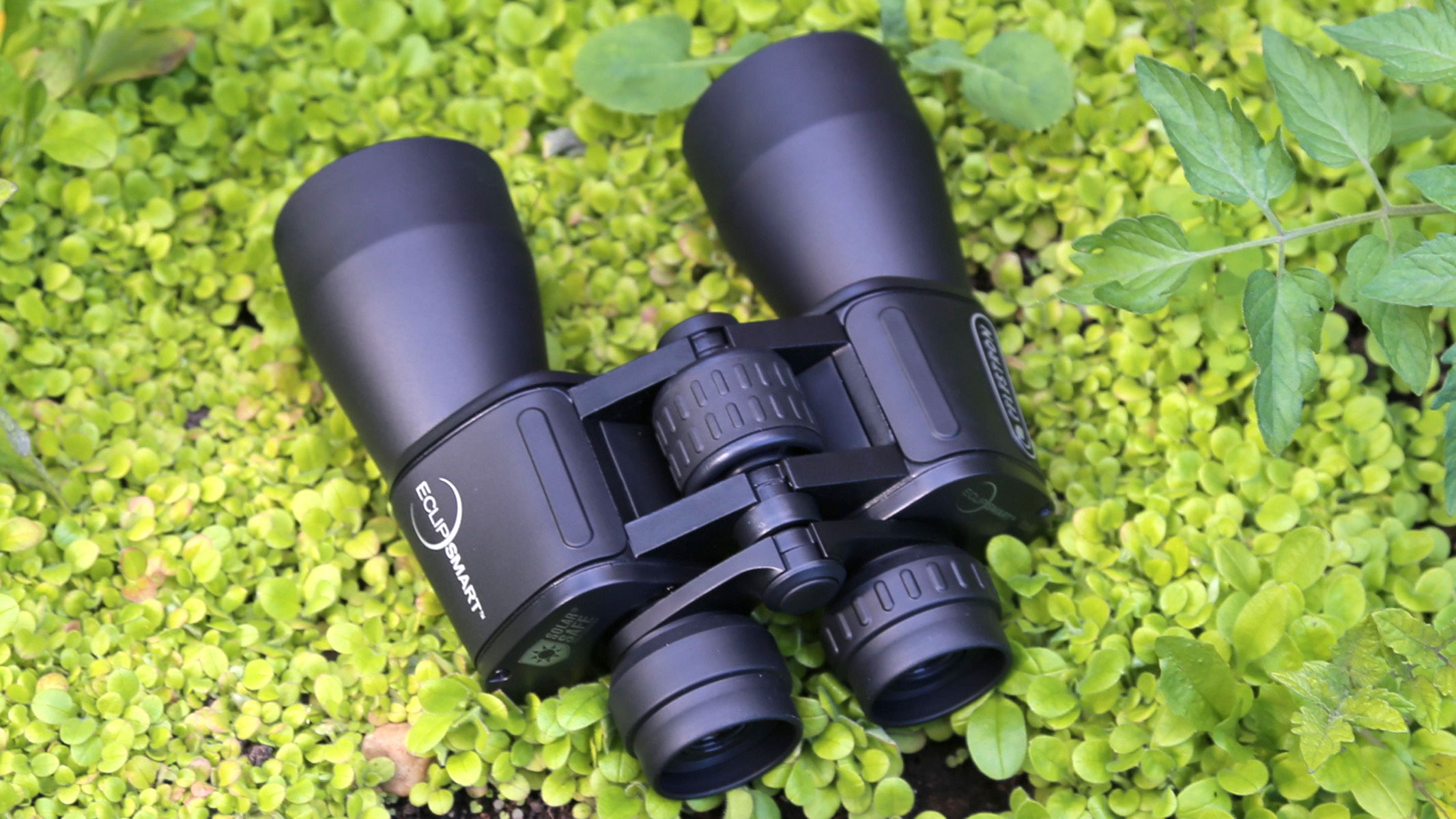
- Solar filters meet ISO rating
- Bulky Porro optical design
- Average quality accessories
Design: Porro prism
Exit pupil: 0.13-in / 3.3mm
Eye relief: 0.47-in / 12mm
Weight: 31.5 oz / 892g
Dimensions: 7.8x2.6x7.3-in / 199x65x186mm
Magnification: 12x
Objective lenses: 50mm
Durability: Water resistant
Except during totality, it's not safe to look directly at the sun through binoculars unless they're fitted with solar filters. That's exactly what the Celestron EclipSmart 12x50mm has, with polymer glass solar filters on the objective lenses that meet the ISO 12312-2:2015(E) international safety standard. On the underside of the barrels are thumb pads, which indicate where to hold them.

Using the Porro prism optical design — known for good contrast, clarity and less light loss compared to roof prisms — the Celestron EclipSmart 12x50mm has a focus wheel on the top and eyecups with plenty of eye relief. Sadly, the lens caps — for both the objective lenses and for the eyecups — are separate and easy to lose, while the neck strap is on the slender side. Ditto the shoulder bag in the box, which is best described as rudimentary.
Celestron EclipSmart 12x50mm porro solar binoculars: Performance
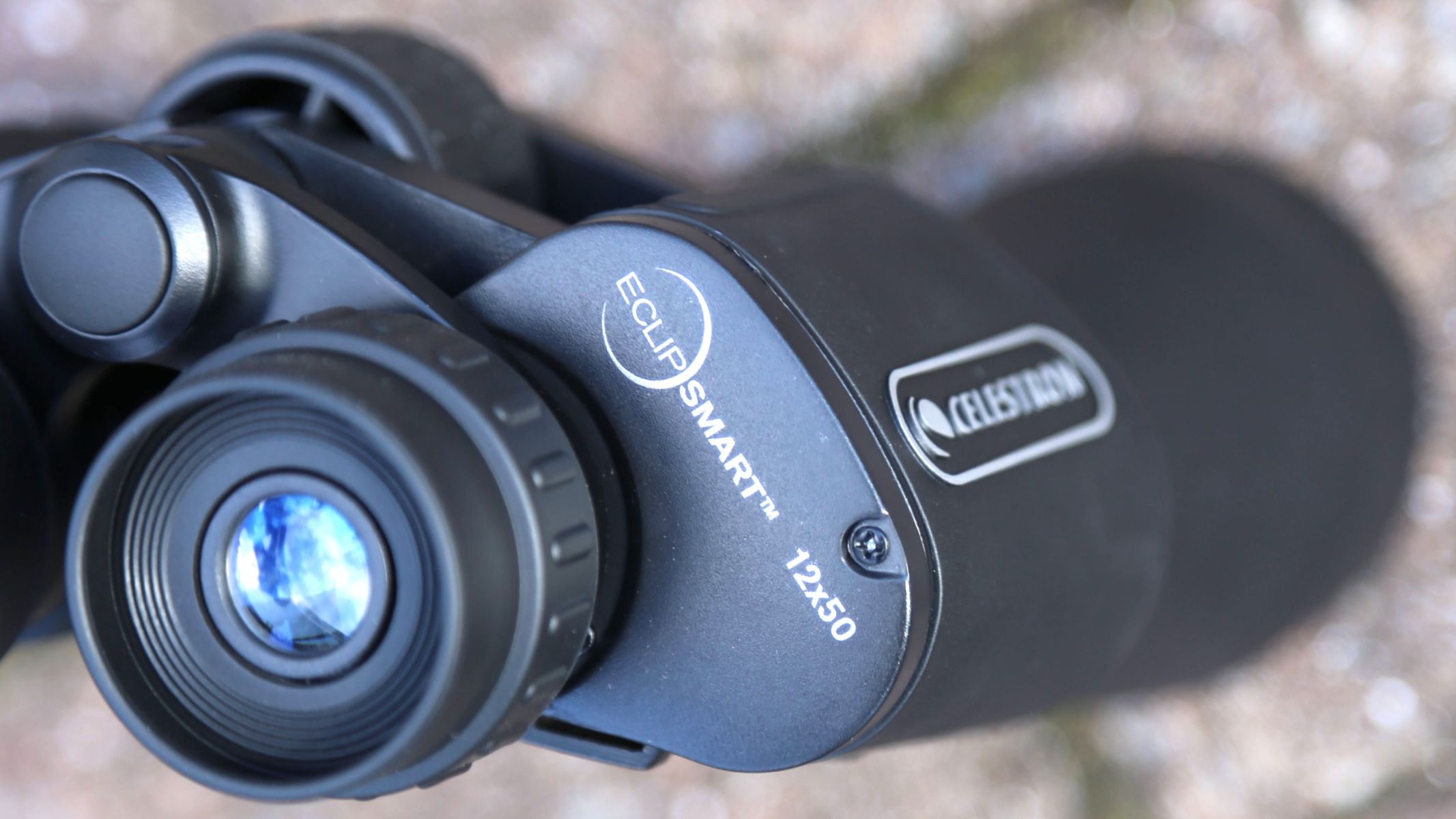
- Blueish-white image of sun
- Detailed views of sunspots
- Some color fringing
With plenty of magnification, the Celestron EclipSmart 12x50 is capable of fantastic detailed close-ups of sunspots peppering the sun's surface. It does so against a cool bluish-white backdrop, though we did notice a trace of color fringing around the sun's disk. This issue appears as visible blue and yellow bands on opposite limbs of the solar disk, but it's neither distracting nor particularly unusual on solar eclipse binoculars.
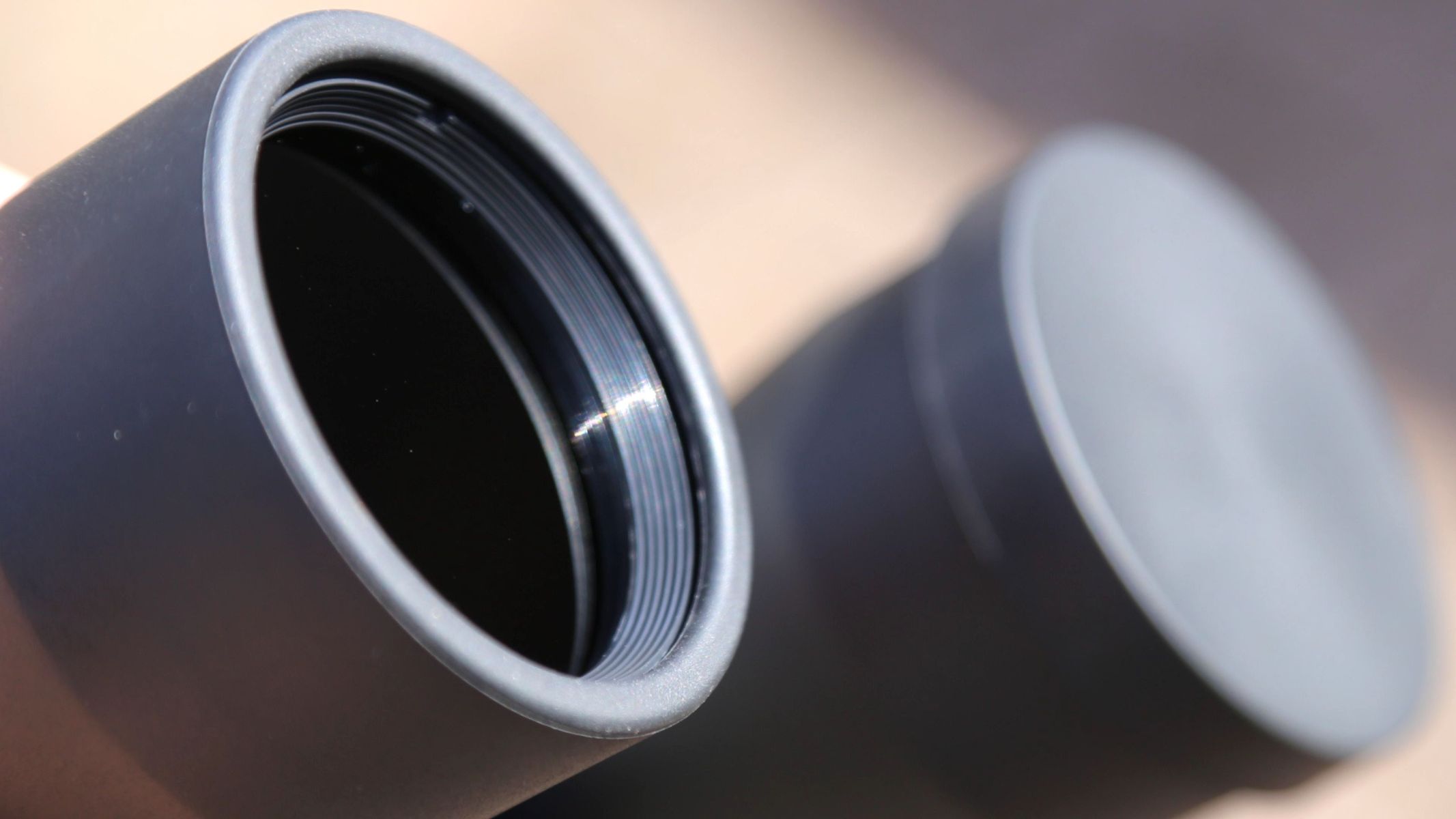
What the Celestron EclipSmart 12x50mm is good at is both identifying sunspots and actually separating areas of activity within them. During my test I could see two large sunspots, Active Region 3403 and 3407, front and center, and make out detail within them. I could also see the smaller 3405 also visible on the eastern limb, something not nearly as visible while using the Celestron EclipSmart 10x42 solar binoculars I had on hand (which offer a little less magnification).
Celestron EclipSmart 12x50mm porro solar binoculars: Functionality

- Difficult to hold stable
- Tripod adaptor jack included
- Requires practice and patience
A common challenge arises when hand-holding binoculars with a magnification beyond 10x. The cause is the added weight in their construction that makes it tough to keep them still. The end result is an image that's just too wobbly — and, thus, blurry — to truly impress. That's the scenario here, though there are ways around it. The first is to sit down while you use them.
Breaking space news, the latest updates on rocket launches, skywatching events and more!
A lot of folks take a lawn chair to watch a solar eclipse, principally because they take about three hours. That's a wise choice made doubly so if you have the Celestron EclipSmart 12x50 in tow simply because sitting down more easily allows your head to take more of the weight of the binoculars.

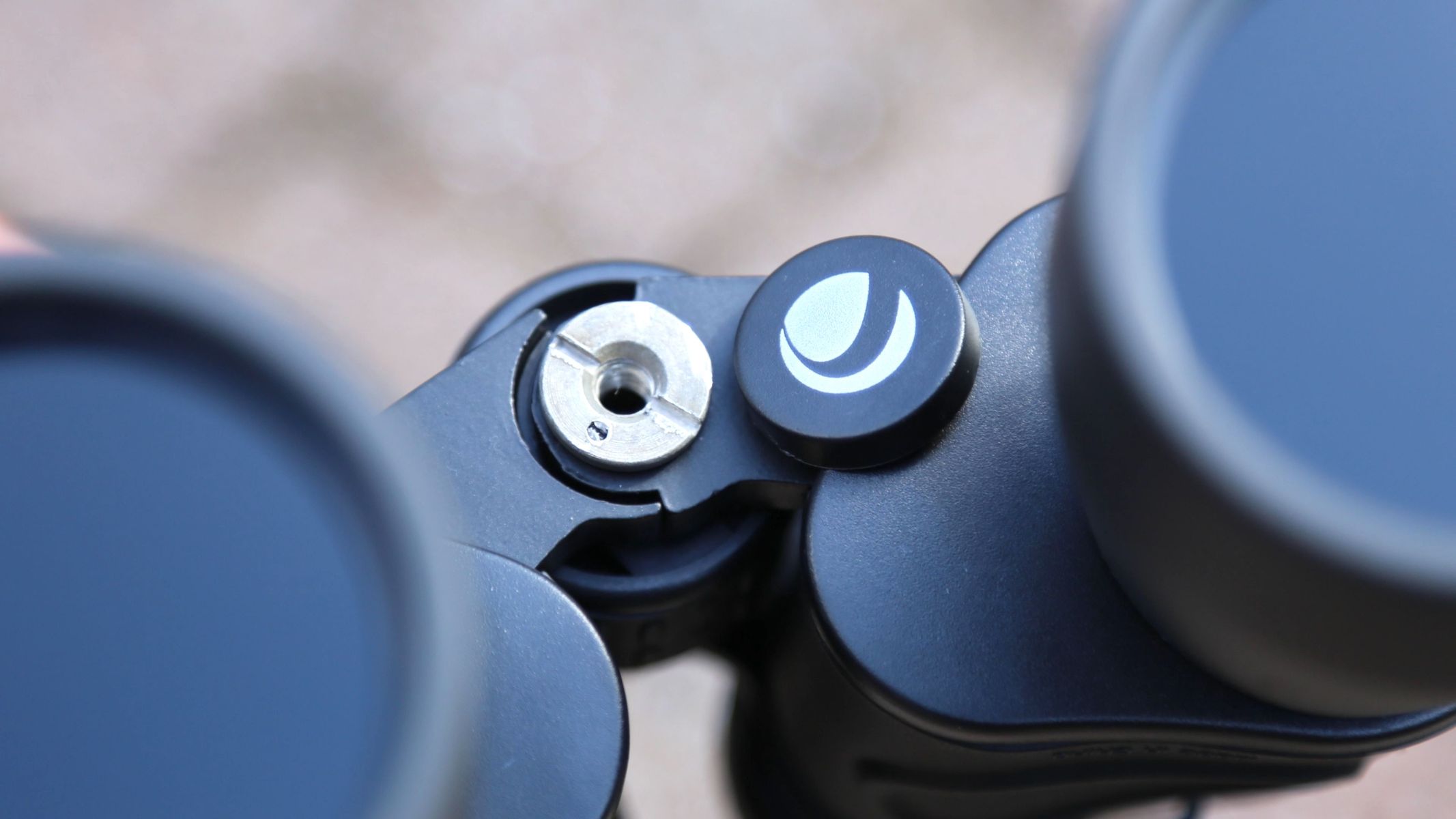
However, the Celestron EclipSmart 12x50 also hides a nifty tripod adaptor jack right between its barrels. Pair this with an L-shaped adaptor and a camera tripod, and voila — you've got yourself a mini-telescope. This is, in practice, the best way to treat the Celestron EclipSmart 12x50 if you want a steady view.
However, the extra magnification on the Celestron EclipSmart 12x50 brings another problem — finding the sun. It might sound like an easy thing to do. After all, it's a huge great fiery ball in the sky, but the sun is actually tiny in our sky (and even smaller as an eclipse progresses) covering just 0.5-degrees of a visible 180-degrees. Besides, the solar filters on the objective lenses mean it's actually the only thing you can see.
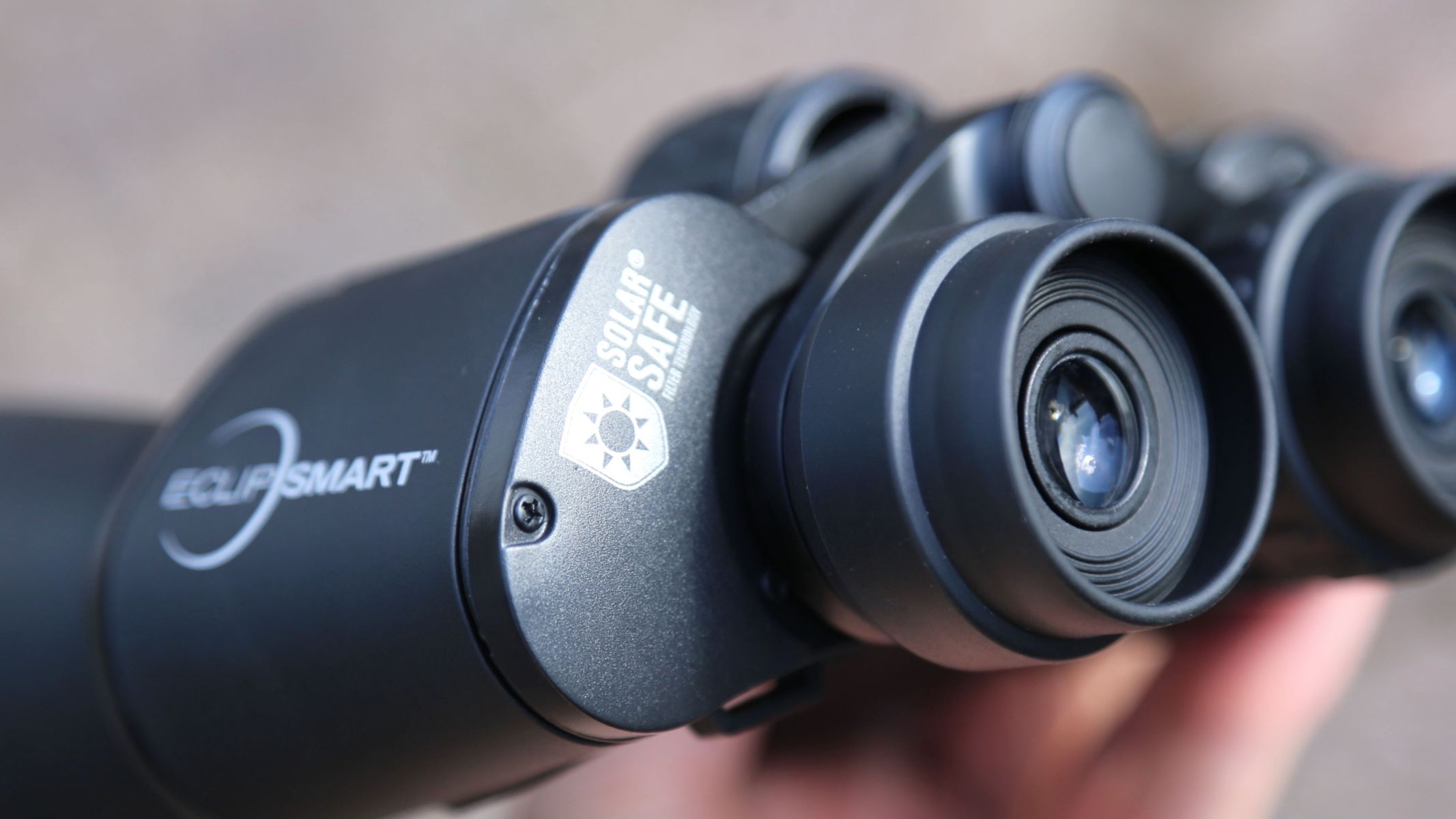
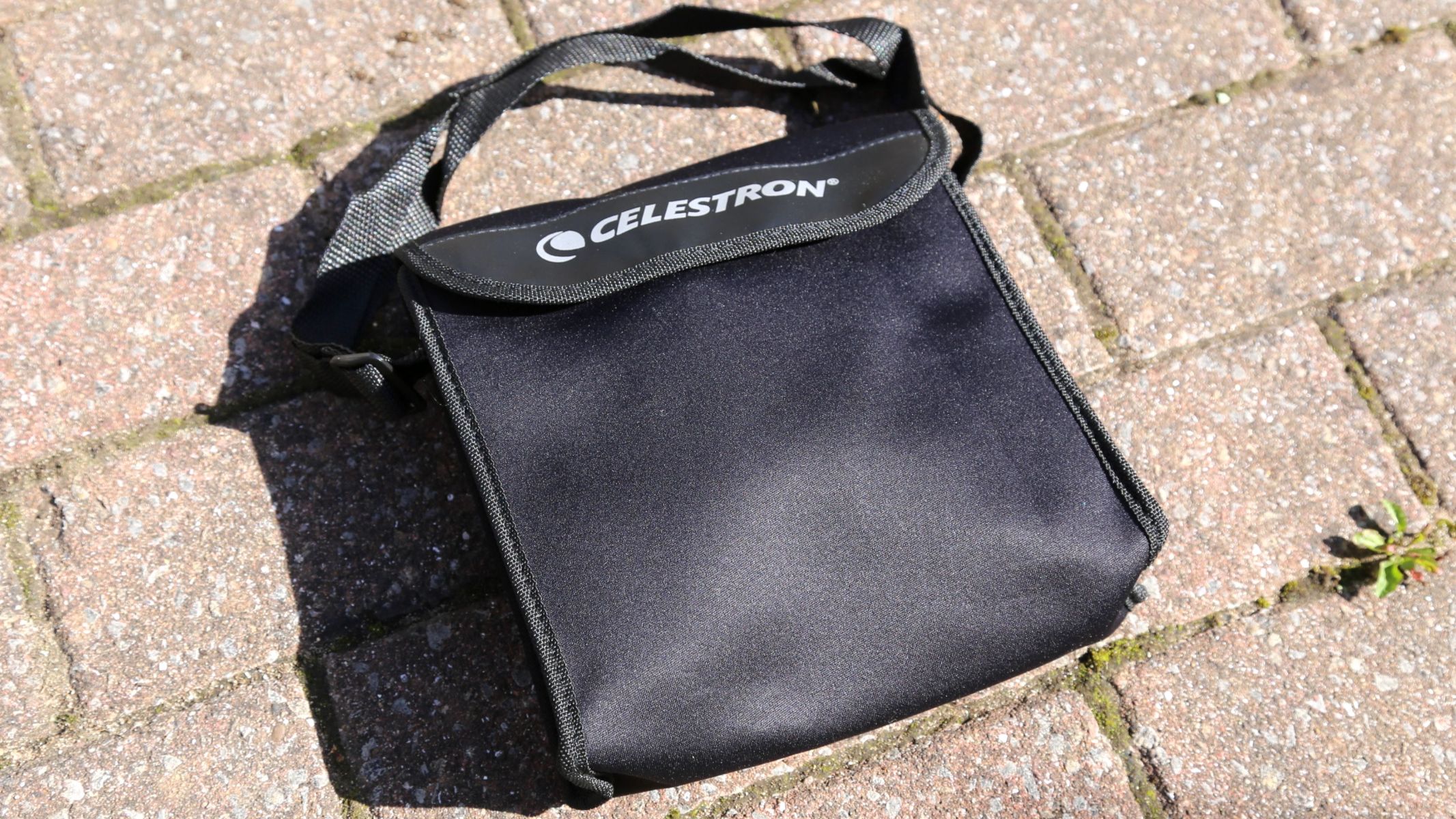
Without context and in a sea of black, finding the sun while hand-holding the Celestron EclipSmart 12x50 is difficult and requires a little practice and patience. The best way is to wear a wide-brimmed hat (a sun hat or a baseball cap) to block the sun from your eyes, roughly face the sun while holding binoculars, and bring them up to your eyes before lifting them slowly towards the sky. It gets easier with practice.
Making adjustments to the distance between the barrels and fiddling with the diopter ring on the right-hand eyecup (to customize the optics to your own vision) isn't particularly easy to do, either, because you need to have the sun in the field of view to make alterations. The diopter tweaks, at least, should be done in advance of the eclipse, though it does mean that sharing the Celestron EclipSmart 12x50 becomes more difficult.
Should you buy the Celestron EclipSmart 12x50mm porro solar binoculars?
The Celestron EclipSmart 12x50mm is best considered by eclipse-chasers that would preferably like to be using a telescope to follow the eclipse, but really don't want to be transporting all that gear. Just about able to be used hand-held, but more impressive when attached to a tripod, it's a good option for those that are flying into their eclipse-observing destination. It will also be of great use before and after solar eclipses merely for studying sunspots.
If the Celestron EclipSmart 12x50mm porro solar binocular isn't for you
If you're fine with mounting the Celestron EclipSmart 12x50mm on a tripod and you're after as much magnification as possible then consider upgrading to the Celestron EclipSmart 20x50mm, which are otherwise identical. However, if you want something much more portable and pocket-sized, the more affordable Celestron EclipSmart 10x25mm will better suit you.
If you're actually not that bothered about getting any magnification of the partial eclipse and instead want a mind-blowing close-up of totality (warning: you must be within the path of totality!) then it's difficult to beat any of the best binoculars, but in particular image-stabilized products like the Canon 10x32 IS and Canon 10x42L IS WP.

Jamie is an experienced science, technology and travel journalist and stargazer who writes about exploring the night sky, solar and lunar eclipses, moon-gazing, astro-travel, astronomy and space exploration. He is the editor of WhenIsTheNextEclipse.com and author of A Stargazing Program For Beginners, and is a senior contributor at Forbes. His special skill is turning tech-babble into plain English.

